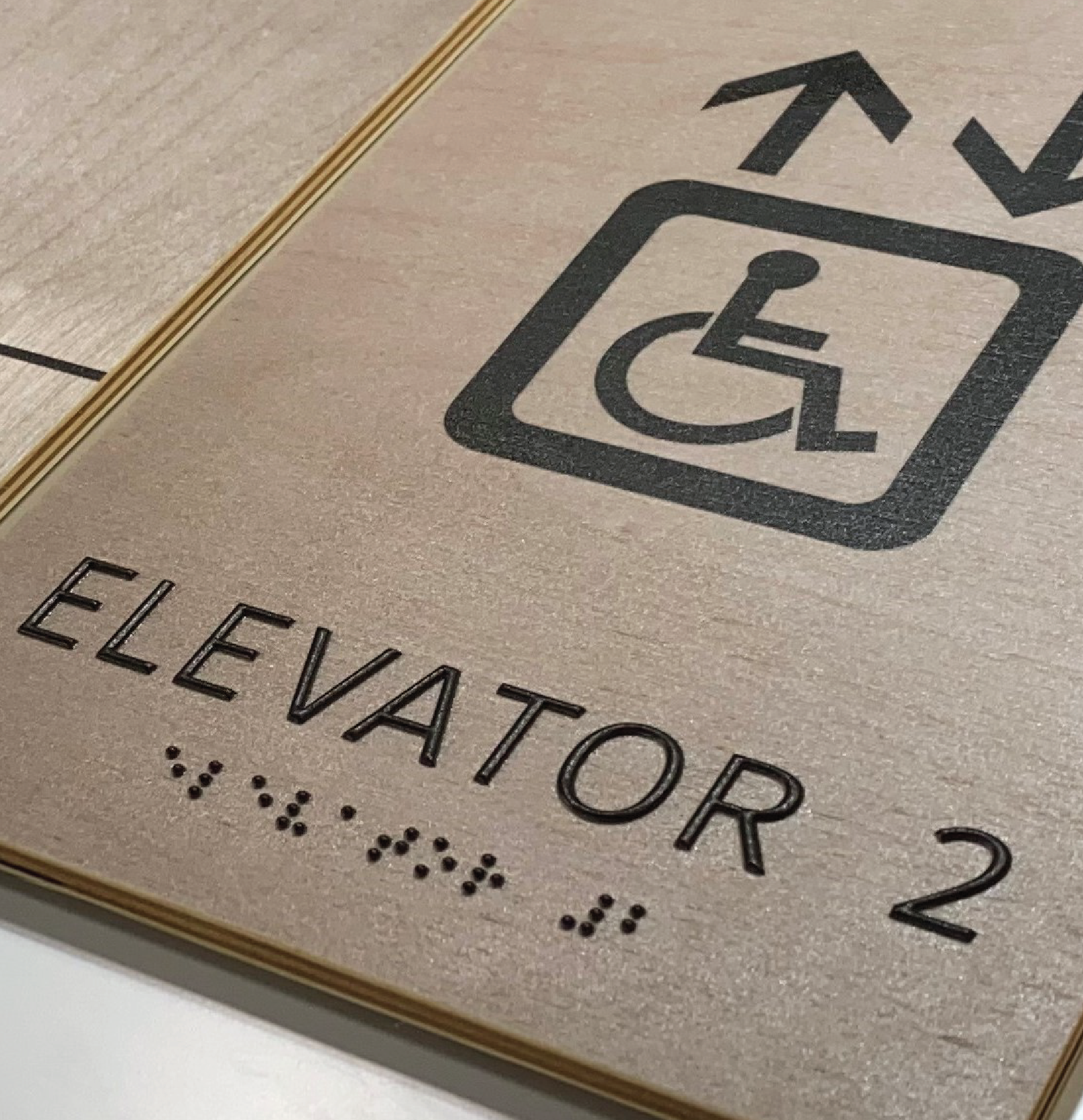The Effect of ADA Signs on Community Availability
The Effect of ADA Signs on Community Availability
Blog Article
Checking Out the Secret Features of ADA Signs for Enhanced Ease Of Access
In the world of availability, ADA indications offer as silent yet effective allies, ensuring that areas are navigable and comprehensive for individuals with handicaps. By integrating Braille and responsive aspects, these indicators damage barriers for the aesthetically damaged, while high-contrast color plans and understandable font styles provide to varied visual requirements.
Relevance of ADA Compliance
Making certain compliance with the Americans with Disabilities Act (ADA) is crucial for promoting inclusivity and equivalent access in public areas and offices. The ADA, established in 1990, mandates that all public facilities, employers, and transportation solutions suit people with impairments, ensuring they appreciate the same legal rights and chances as others. Conformity with ADA criteria not only fulfills legal responsibilities yet likewise boosts an organization's credibility by demonstrating its commitment to diversity and inclusivity.
One of the crucial facets of ADA conformity is the implementation of obtainable signage. ADA signs are developed to make sure that individuals with disabilities can quickly browse via rooms and buildings. These indications need to adhere to certain guidelines relating to size, font, shade comparison, and positioning to ensure exposure and readability for all. Appropriately applied ADA signage aids remove obstacles that people with specials needs often encounter, thereby advertising their self-reliance and self-confidence (ADA Signs).
In addition, sticking to ADA policies can minimize the risk of potential penalties and legal repercussions. Organizations that fall short to adhere to ADA guidelines may face legal actions or fines, which can be both damaging and economically burdensome to their public picture. Hence, ADA compliance is indispensable to fostering an equitable atmosphere for everybody.
Braille and Tactile Components
The consolidation of Braille and tactile elements into ADA signs personifies the principles of ease of access and inclusivity. It is normally put under the corresponding message on signs to make sure that individuals can access the info without visual help.
Responsive aspects expand past Braille and include increased symbols and characters. These parts are designed to be discernible by touch, enabling individuals to identify area numbers, washrooms, leaves, and various other vital locations. The ADA sets particular standards concerning the dimension, spacing, and positioning of these tactile components to enhance readability and ensure consistency across various atmospheres.

High-Contrast Color Design
High-contrast shade systems play a crucial role in improving the visibility and readability of ADA signs for individuals with visual impairments. These systems are crucial as they maximize the distinction in light reflectance between message and history, ensuring that signs are quickly discernible, even from a range. The Americans with Disabilities Act (ADA) mandates making find more use of certain shade contrasts to fit those with minimal vision, making it a crucial aspect of conformity.
The effectiveness of high-contrast shades exists in their capability to stick out in various illumination problems, consisting of dimly lit environments and areas with glow. Typically, dark text on a light background or light message on a dark background is used to achieve optimum contrast. For example, black text on a yellow or white history offers a stark visual difference that aids in fast acknowledgment and comprehension.

Legible Fonts and Text Dimension
When taking into consideration the design of ADA signage, the selection of understandable typefaces and suitable message dimension can not be overemphasized. These aspects are important for making sure that indications come to people with visual impairments. The Americans with Disabilities Act (ADA) mandates that typefaces have to be sans-serif and not italic, oblique, script, extremely ornamental, or of unusual type. These demands assist make sure that the text is quickly legible from a range and that the personalities are distinct to diverse target markets.
According to ADA standards, the minimum message height should be 5/8 inch, and it ought to increase proportionally with watching range. Uniformity in message size contributes to a cohesive visual experience, assisting people in browsing environments successfully.
In addition, spacing in between lines and letters is indispensable to legibility. Adequate spacing stops characters from appearing crowded, improving readability. By sticking to these standards, developers can dramatically boost accessibility, ensuring that signage serves its intended purpose for all people, despite their aesthetic capabilities.
Reliable Placement Methods
Strategic placement of ADA signage is vital for maximizing accessibility and making certain compliance with legal standards. ADA guidelines specify that signs must be installed at an elevation between 48 to 60 inches from the ground to guarantee they are within the line of view for both standing and seated individuals.
Additionally, indications have to be put surrounding to the latch side of doors to enable easy identification prior to entry. Uniformity in indication positioning throughout a facility improves predictability, lowering confusion and boosting total individual experience.

Conclusion
ADA indicators play an important role in advertising availability by incorporating functions that attend to the needs of people with impairments. These aspects collectively foster an inclusive setting, highlighting the importance of ADA compliance in ensuring equivalent gain access to for all.
In the realm of access, ADA signs serve as quiet yet effective allies, ensuring that areas are accessible and comprehensive for people with disabilities. The ADA, established in 1990, mandates that all public facilities, employers, and transport services suit individuals with handicaps, ensuring they take pleasure in the very same legal rights and chances as others. ADA Signs. ADA signs are made to make certain that people with specials needs can quickly navigate through spaces and structures. ADA standards specify that indications need to be placed at a height in between 48 to 60 inches from the ground to ensure they are within the line of sight for both standing and seated people.ADA indications play an important duty in promoting availability by integrating features that attend to the demands of individuals with handicaps
Report this page